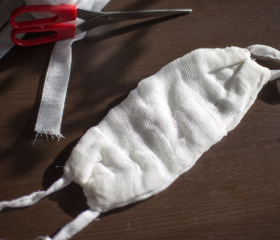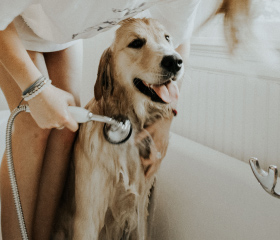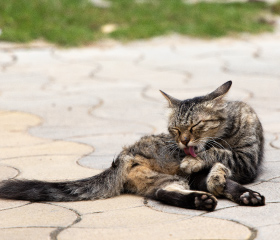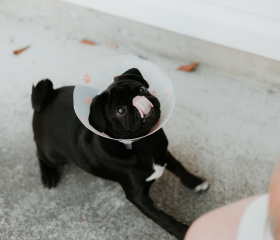

- Apply pressure for 5 minutes if there is active bleeding
- ‘First do no harm’: many products advertised to disinfect wounds can harm healthy tissue. A thorough flush of the wound with plain water alone is effective in reducing the obvious dirt. It is FAR better to flush a wound with water than spraying purple spray all over the wound while leaving the contaminants in the wound.
- Trim away matted hair if the pet allows it and flush again.
- Apply a light dressing after drying the wound to keep the wound clean until veterinary care can be sought. Ensure the bandage is not too tight (you should be able to slide a finger under.)
- There are several stages to wound healing, the aim of wound treatment is to help the wound progress through the stages without delays. Delays can be caused by:
- Excessive movement
- Contamination and infection
- Inappropriate topical treatment
- Patient factors (e.g. immunosuppression, age, illness) etc.
- Minor wounds and scrapes will heal in most healthy pets without the need for antibiotics if appropriate wound care is given. Veterinary attention is necessary for all deep, or extensive wounds, and additionally in cases where the pet has other health concerns (e.g. diabetic patients). If in doubt; seek veterinary attention! A dog bite wound can seem minor (tiny puncture) but have extensive damage underneath—‘iceberg effect’. Bite wounds in cats often leave very small wounds, barely visible underneath the fur, but can become very large abscesses due to infection in the wound if not cleaned properly.
- Do not leave dressings on for more than 2 days (unless instructed differently by your vet.) It is ideal to clean wounds daily.
Contact your vet if you are not sure what to do and before giving any medication.




